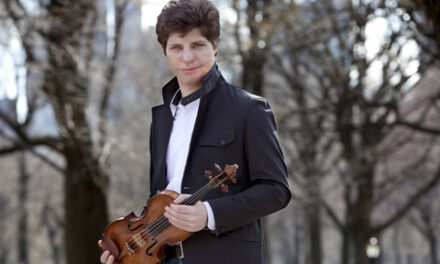Even before the Connor Chamber Music series began six years ago at Tate Hall, Catherine and Wilton Connor were among the strongest advocates of chamber music in the Metrolina area. They had previously helped to give the St. Peter’s Chamber Music series extra reach beyond Uptown church by hosting Living Room Concerts in their Myers Park home. Furthermore, they had opened their doors to violinist Rosemary Furniss and her chamber trio when her husband, Christopher Warren-Green, was the Charlotte Symphony’s music director. So it was bittersweet to hear Mr. Connor announce that the latest concert on the Central Piedmont Community College campus, showcasing piano quintets by Béla Bartók and Antonín Dvořák, would be their last. Connor hastened to console us, hyping the recent and future concerts of Chamber Music for All, led by Charlotte Symphony concertmaster Calin Lupanu. And in fact, the program we were soon to hear had already been performed a week earlier at the Lancaster Cultural Arts Center, the climactic event of the inaugural Historic Lancaster Music Festival. Future CM4A concerts are already scheduled there, at Sedgefield United Methodist Church, and at the Steinway Piano Gallery.
Not nearly as renowned, recorded, or as frequently performed as his six string quartets, Bartók’s Piano Quintet in C is one of the composer’s earliest works, written in 1903-4, a mere 17 years after Dvořák’s quintet was premiered and 35 years before his own final string quartet. Often in its outer movements, the opening Andante and the concluding Poco Vivace, the music has an anthemic openness that you might expect from a 19th-century piece written in the shadows of Liszt, Strauss, and Brahms, before Bartók leaned more toward folk music and modernistic experimentation. At the keyboard, Phillip Bush resisted the temptation of steering the joyousness of the piano part into stentorian jubilation, resulting in more ensemble cohesiveness and more contemplative edge. Lupanu could stay more within himself to match Bush’s fire without ever flattening the peaks and valleys of the volatile music where Bartók abruptly changed tempos and dynamics. Marcus Pyle, who had inched onto our radar earlier this year as a preview speaker for Opera Carolina’s production of Porgy and Bess, impressed almost instantly on viola with his lush tone and sleek double-bowing.
The inner movements, a Vivace-Scherzando followed by an Adagio, are more forward-looking. The Scherzando did not lack for quirkiness, but Bush could have been more provocative and eccentric in the second movement. With cellist Marlene Ballena and second violinist Monica Boboc making valuable contributions, the quartet sounds were dominant in the Adagio, though the 2019 Alpha Classics recording, captured live at the Lockenhaus Chamber Festival, dares to be more raucous and astringent. When Lupanu’s quintet surrendered more fully to the closing Vivace, they delivered more of its fire and madness.
Competition among recordings of the Dvořák Piano Quintet is exponential compared with the sparse field of Bartók recordings, as is the name recognition of the pianists, violinists, and string quartets who have entered the fray. On the other hand, the musicians onstage at Tate Hall must have had so many more opportunities to glean master classes from this immense discography – and likely more opportunities to rehearse and perform this perennial favorite before bringing it to CPCC. The electricity and sound quality of live performance, the familiarity of the audience with the piece – particularly when it settled into the dreamy Dumka movement after the rousing Allegro opener – brought the Connor concert experience into gratifyingly close alignment with the best CDs available.
Bush played with confident élan, pliant and at ease navigating the tempo shifts of the opening movement, charming and lyrical in the gorgeously pianistic Andante passages that make the Dumka so memorable, and unbridled with the onset of the folksy interludes. Lupanu also played with loose and spontaneous abandon, slashing boldly with his bow at the quick tempos and delicately caressing the strings in the lovely soft passages. Ballena shone most with her cello as she introduced the first theme of the Allegro, and Pyle was equally convincing introducing the second. Everybody seemed to be having a jolly time as the sober ending of the Dumka gave way to the penultimate Scherzo. Lupanu and Bush mischievously frolicked on the left side of the Tate stage, answered to humorous effect by Ballena and Pyle with their suave mellowness.
Boboc had her most memorable spot in the Allegro Finale when we jumped away from the spirited interplay between Bush and Lupanu into a fugal section where Ballena and Pyle also got a taste. There were also harmonious sections that reminded me of the uniqueness of Dvořák’s string quartets. Yet it was Bush who was most dominant at the concert’s climax, trilling and ding-a-linging merrily before he ramped up the speed and intensity toward the very end. Obviously relishing the encounter, Lupanu matched him note for note as they raced to the precipice.











